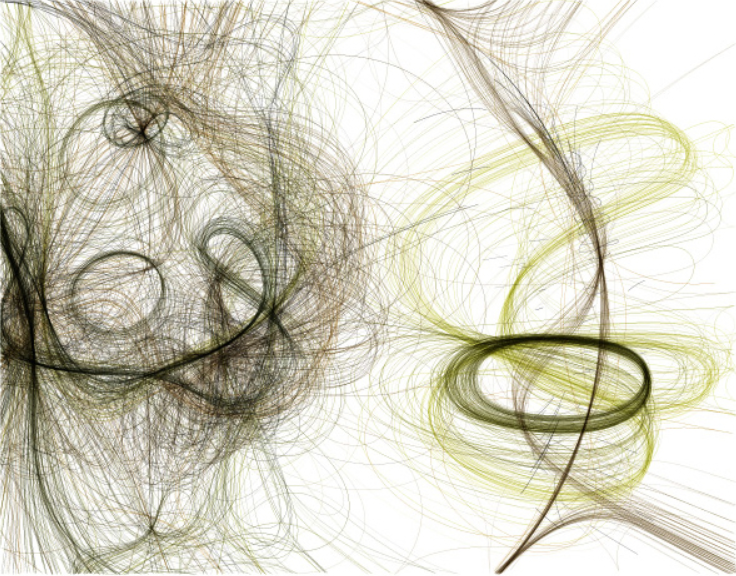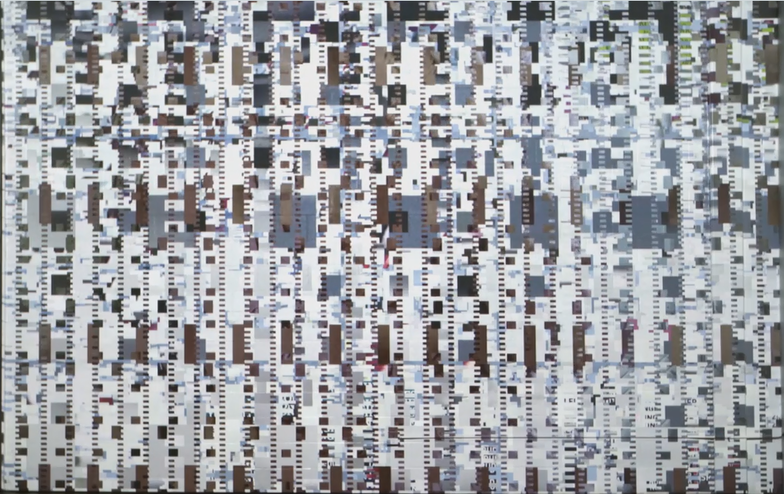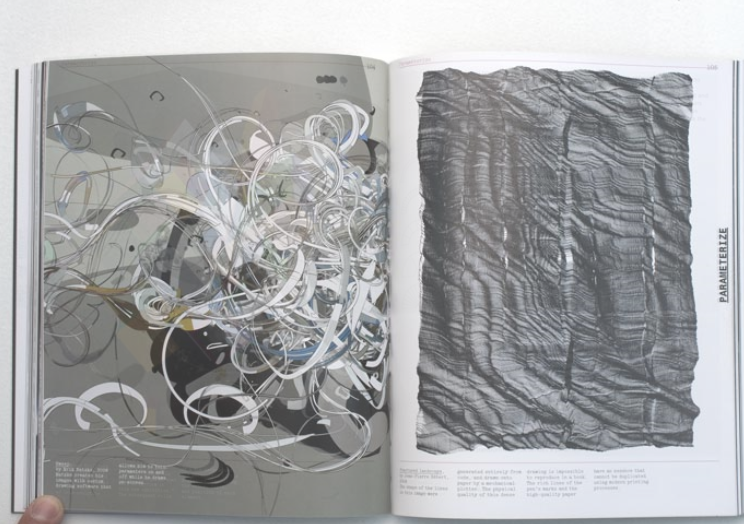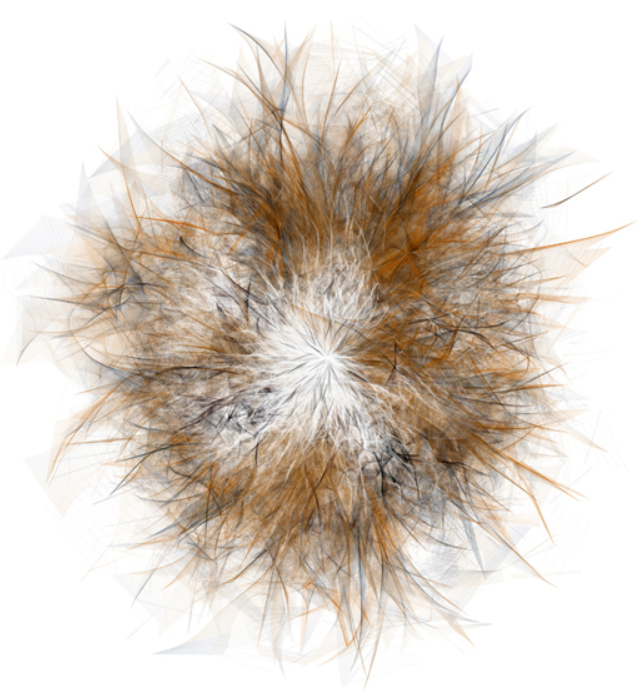At Dentsu Lab Tokyo, we call people who express themselves using technology "Creative Technologists." In this series, we interview Creative Technologists worldwide about their work and creations, exploring what new forms of expression emerge from technology.
Programming Artist Casey Reese
Following our previous interview with Aaron Koblin, who uses technology to tell stories, this time we speak with Casey Reas, who creates art from code. While teaching at the University of California, Los Angeles (UCLA), he developed "Processing" (※), an environment for creating visual art using code. (He was also my professor in college). We talked about creating art through coding.
(The interview was conducted via online messaging)
※Processing: A programming environment that enables learning coding through visual creation. Since its release in 2001, it has served as a bridge connecting technology and art, used by students, artists, designers, and researchers worldwide for diverse projects including prototyping.
A sketchbook for drawing with code
Kida: It's been a while, Professor.
Casey: Long time no see.
Kida: You developed Processing, an environment for creating visuals through programming. I learned about it in class and have been using it ever since.
Casey: Processing is a sketchbook for creating visual art with code. You can make interactive media like games, and also design things like posters and books.
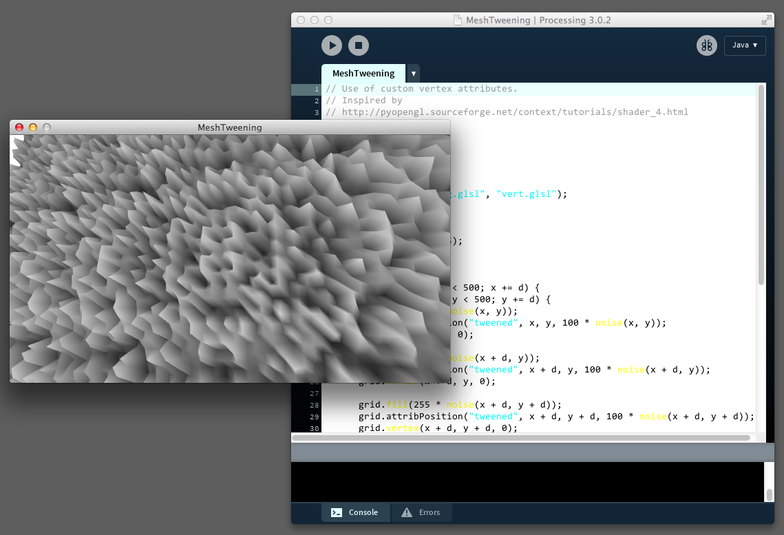
Processing showing what happens when you run the code.
Kida: Why did you create Processing in the first place?
Casey: To sketch ideas in my head using code. I used it to teach programming to students.
Kida: When Processing first came out, artists were using it. But gradually, it spread to architects and people in the communications industry. Did you originally intend for them to use it?
Casey: Processing is for everyone. We made it usable for both artists and tech specialists. For example, architects who can program or scientists who want to make their charts easier to understand use it.
Kida: So there are no barriers in how people use or engage with technology. At Dentsu Lab Tokyo, while there are technologists like me, we also have staff with other specialties. But how they leverage technology for expression—that engagement is entirely up to the individual, right?
Let's get right to it—please introduce your work.
Casey: This is an early work, " Tissue " (2002). I constructed elements of my work using code, and executing that code produced this image. Back then, I was interested in how forms emerge and grow. Recently, I've been fascinated by the influence of mass media, leading me to create " KNBC," which captures and transforms signals from a TV tower.
The theme of my work is searching for ideas and posing questions to the world. The fact that my pieces are both visible and abstract reflects what's happening inside my head.
Code while you create, think, and learn
Kida: Coding plays a significant role in your own creative work.
But compared to sketching with a pencil, building things through programming seems challenging for beginners. As a professor, how do you teach your students expression through code?
Casey: Generally, how long does it take to learn pencil drawing? Or to learn to write? Most people who come to study with me have these skills, but few know how to program. To express yourself in the 21st century, you need to learn programming alongside drawing and writing.
Kida: How do you teach the kind of expression that can only be created through programming?
Casey: By examining professional work and discussing it. For example, in my classes, we use a textbook called FORM+CODE. It contains code and the results of executing that code.
Students write their own code based on the examples, then show each other the results and discuss them. What kind of expression is interesting? Why is it interesting? What kind of code or algorithm was used to express it?
For example, they might be given an assignment like "Draw a picture where the shape follows the mouse's path." Each person writes their own code. Then they show each other the results along with the code, learning how to make the most of the code.
Kida: So it's about creating, thinking, and learning. At Dentsu Lab Tokyo, we approach projects daily under a similar philosophy.
Turning vague ideas and intuition into code
Kida: Looking at your work, I felt the process of its creation was important. Did you originally create Processing to express that process, or did the process become important after you created Processing? Which was it?
Casey: Both process and output are interconnected. Take " Process 6," created about ten years ago, as an example. Most of the work isn't written in Processing, but in English. The foundation of the piece is the instruction: "The relationship between shapes unfolds over time." This instruction could be expressed in English or Japanese, just like coding. I use Processing to translate this instruction into a visual form.
Kida: Doesn't using software as a tool limit the output?
Casey: I think output is influenced by whatever tool you use. Your question is like asking Haruki Murakami if writing restricts his expression—he'd surely say yes. Yet writing allows him to clearly convey his thoughts to others. For me, code helps me give shape to fuzzy ideas and intuitions.
Kida: I see. That makes perfect sense. Thank you very much. I look forward to seeing even more of your work in the future!
[After the Interview]
To express yourself, "mastering your tools" is crucial
Now that digital technology is commonplace, writing programs and engaging with interactive expression is no longer unusual. Interviewing Casey made me keenly aware once again: when you want to master something as a form of expression, thoroughly understanding the tools you use to express yourself is crucial. For example, when trying to draw something with a pencil, how well you understand the pencil as a tool decisively impacts the output. The same holds true when attempting to express yourself using code. In that sense, creating art through expression with code is not something special.
Casey, who developed Processing, connected programming—previously an unfamiliar tool for expression—to many artists, creating fertile ground for new digital expression. Many artists gained the ability to write code, enabling the exploration of new forms of expression.
Full version of this article here






